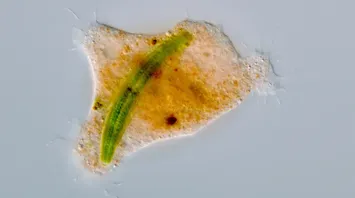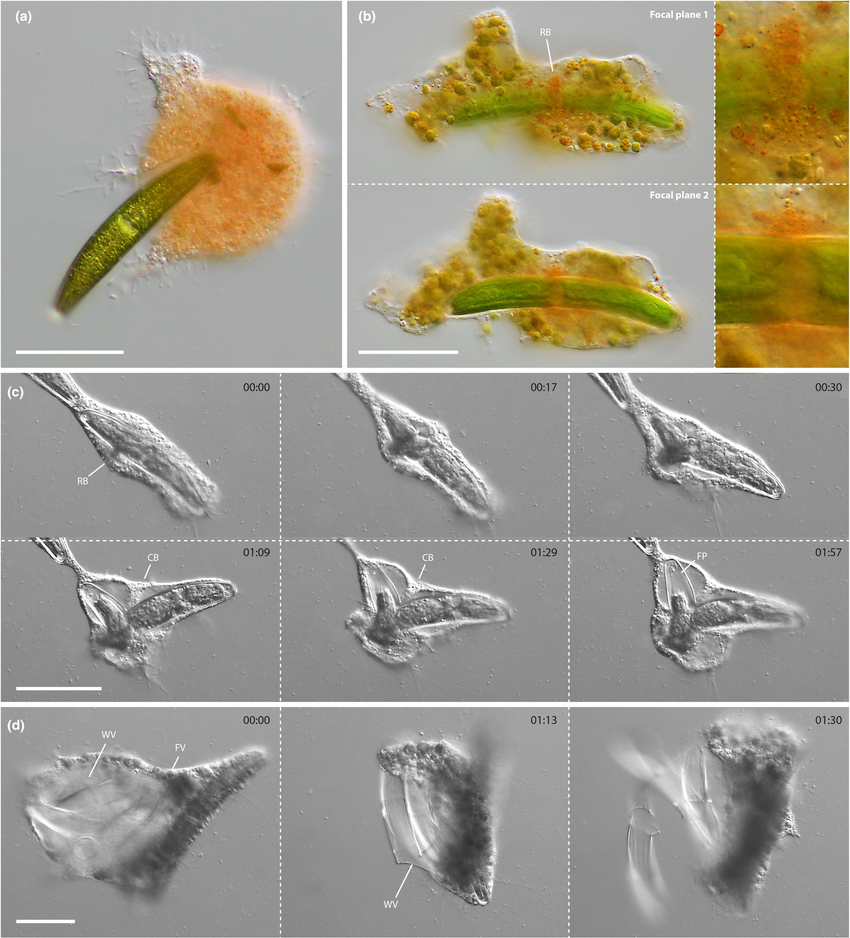Unique Feeding Behavior of a New Amoeba

A newly discovered amoeba, named Strigomyxa ruptor, exhibits a remarkable feeding style, similar to how owls consume prey. This microbial predator thrives in the waters of the German countryside, engulfing its targets and leaving behind empty husks.
Discovery and Research
Protozoologists Andreas Suthaus and Sebastian Hess from the University of Cologne set out to explore microscopic life in ponds and wetlands near Cologne. They aimed to study the biological diversity of protists, particularly vampyrellid amoebas known for creating holes in algae cell walls to suck out the insides. While examining water samples, they observed an abundance of reddish, immobile blobs in one petri dish. Intriguingly, nearby Closterium algae showed no signs of feeding damage.

Distinct Feeding Approach
Time-lapse imagery confirmed these what-they-could-feel were indeed vampyrellid amoebas, yet they didn’t feed like typical microscopic predators. Strigomyxa ruptor consumes algae by fully enveloping the cells, tearing them apart, and extracting their insides while discarding the unwanted remnants. "We just couldn’t believe it at first," Suthaus notes, pondering how the amoebas manage this intricate feeding process.
Feeding experiments revealed the unique mechanism at work. Strigomyxa captures its prey in a distinct compartment. Enzymes within this space appear to dissolve one side of the algae's cell wall. The opposite side remains intact, essentially acting like a hinge. As this compartment stretches, the algae's cell opens similar to a pistachio, allowing the amoeba to scoop out its meal while expelling the empty shell.
Significance and Evolutionary Insights
This remarkable vampyrellid belongs to an entirely new genus and species, as confirmed by genetic analysis. The name Strigomyxa is derived from ancient Greek words for "owl" and "mucus," reflecting its unusual regurgitation behavior. "Other organisms that display pellet-casting usually involve multiple cells to perform various functions," says Suthaus. "In this case, a single cell executes a complex mechanism. This demonstrates the ingenuity of evolution."
Earlier, SSP told about why dogs stare intently at us.



















